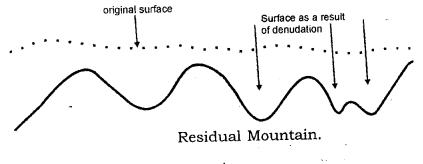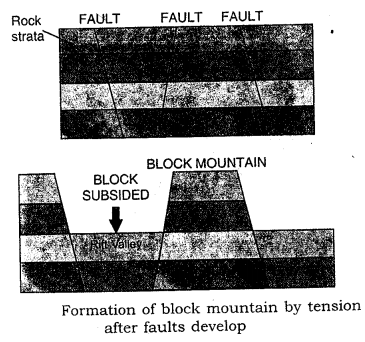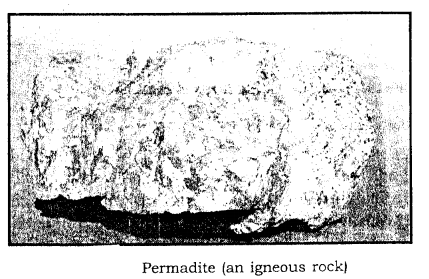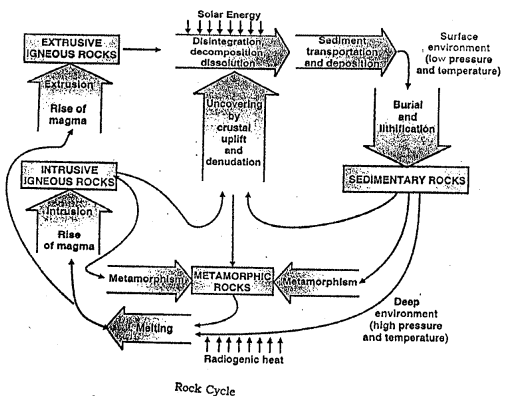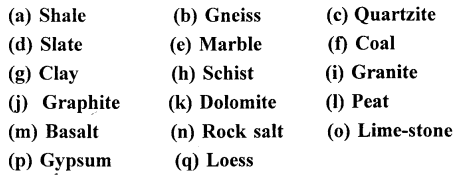ICSE Solutions for Class 9 History and Civics – India in the 6th Century BC: Rise of Jainism and Buddhism
ICSE SolutionsSelina ICSE SolutionsML Aggarwal Solutions
EXERCISES
Question 1.
Give any two sources to reconstruct the two great religious movements—Jainism and the Buddhism.
Answer:
Literary Sources:
- The Jataka Tales, The Tripitakas.
- Archaeological Sources: The Great Stupa at Sanchi, Samath Pillar.
Question 2.
Mention two causes which favored the rise of Jainism and Buddhism in the 6th Century BC.
Answer:
Two causes which favored the rise of Jainism and Buddhism in the 6th Century BC. were:
- Ritualistic Vedic Religion.
- Expensive Sacrifices.
Question 3.
Name the first and the last two Jain
Answer:
The first Tirthankaras was ‘Risabit known as Adi Nath. The last two Tirathankaras were ‘Parashvanath’ and ‘Mahavira’.
Question 4.
What was the Original name of Mahavira?
Answer:
The Original name of Mahavira was Vardhamana.
Question 5.
How did Vardhamana become Mahavira?
Answer:
Vardhamana renounced all wordy pleasures. At the age of thirteen, he became an ascetic and attained the true knowledge (Kevala Jnana), therefore he come to be known as Mahavira.
Question 6.
Why were the followers of Mahavira called Janis?
Answer:
Since Vardhamana became popular with the name of Mahavira (the great hero) or Jina (the conqueror of self), therefore, his followers were called Janis.
Question 7.
Mention any two teachings of Mahavira (any two doctrines of Jainism).
Answer:
The two teachings of Mahavira are:
- Ahimsa.
- No Belief in God.
Question 8.
What is known as Triratna in Jainism?
Answer:
Right faith, Right knowledge and Right conduct is known as Triratna in Jainism.
Question 9.
Name the two sects of Jainism. What is the main difference between the two?
Answer:
Svetambaras and Digambaras. Their main difference is that the Digambar Munis (ascetics) remain completely nude. They do not keep even a small piece of cloth on their bodies. The Svetambara Munis, on the other hand wear white clothes.
Question 10.
Mention the “Four Great Sights” of Buddhism.
Answer:
The “Four Great Sights” of Buddhism were:
- The sight of an old man.
- A sick man.
- A dead body.
- An ascetic.
Question 11.
What is known as the Great Renunciation?
Ans.
The urge for finding a solution to the problems of human suffering and death, made Buddha broke all his wordy ties and left his place at the age of 29 as an ascetic in search of truth. This event came to be known as the Great Renunciation (Maha Parityaga).
Question 12.
How did Gautama come to be known as the Buddha?
Answer:
When Gautama got enlightened with the spiritual knowledge after rigorous meditation, he came to be known as the Buddha or the Enlightened One.
Question 13.
Name the place where Buddha got Enlightenment.
Answer:
At Bodh Gaya, under the Pipal tree Buddha got Enlightenment.
Question 14.
Name the place where Buddha gave his first Sermon.
Answer:
At the Deer Park near Samath, Buddha gave his first spiritual Sermon.
Question 15.
What are the “Four Noble Truths” of Buddhism?
Answer:
The “Four Noble Truths” of Buddhism are:
- The world is full of sorrows and suffering.
- The main cause of suffering is man’s desire (Trishna) for sensual pleasures and earthly possession.
- Suffering can be removed by getting rid of desires, i. e., renunciation.
- One can overcome desires by following the Eight-Fold Path.
Question 16.
Mention any four points of the Buddhist Eight-Fold Path.
Answer:
Select any four points from the Eight-Fold Path in Buddhism:
- Right Faith
- Right Aspiration
- Right Action
- Right Speech
- Right Meditation
- Right Living
- Right Effort
- Right Contemplation
Question 17.
Mention any two teachings of Lord Buddha.
Answer:
Ahimsa and no faith in caste system. ,
Question 18.
Mention any two similarities in the teachings of Jainism and Buddhism.
Answer:
The principle of ‘Ahimsa’ and ‘Opposition to Caste System’.
Question 19.
What is the importance of the Jatakas in Buddhism?
Answer:
The Jatakas’ tales throw light on the social and political conditions of the people in the 3rd and 4th centuries BC. The most important thing about the Jatakas’ tales is that they deal with the previous births of the Buddha.
Question 20.
How do Buddhist ideals still affect our life?OR What impact did Buddha’s teachings have on Mahatma Gandhi’s thoughts?
Answer:
The Buddhist ideals even today have a significant place in our life. The principles of equality, teachings of non-violence and individual purification are still working as usual. Evils, such as pride, envy, wrath and lust have no place in our life even today.
Mahatma Gandhi took a leaf from the Buddha’s life when he said, “non-violence is the first article of my faith.” He also said, “religion in the sense of peace, fraternity and all-embracing love can alone be the basis of the existence of the world.”
Question 21.
What is called a Vihara?
Answer:
A Vihara (Monastery) was permanent abode or residence of the monks.
Question 22.
Give two reasons why Magadha grew into a powerful kingdom around 600 BC.
Answer:
The two reasons of growing of Magadha into a powerful kingdom around 600 BC. were as follow:
- The fertile plains brought about prosperity and consolidation to the Magadha kingdom.
- Discovery of Iron in large quantities in Chota Nagpur and the hilly regions of Magadha.
Question 23.
Mention any two factors that led to the growth of Jainism.
Answer:
The following two factors led to the growth of Jainism:
- The simple doctrines of Mahavira.
- Usage of common language of the masses, instead of Sanskrit.
Question 24.
What were the causes of the decline of Jainism?
Answer:
The causes of the decline of Jainism are:
- The loss of royal patronage.
- Rigid principles and difficulty in following the severe penance and austerity advocated by Mahavira.
- Split-up of the Jainism into two sects i. e., the Shvetambaras (clad in white) and the Digambaras (Sky-clad or naked).
- The revival of Brahmanism.
Question 25.
Mention two factors that led to the spread and growth of Buddhism.
Answer:
Two factors that led to the spread and growth of Buddhism are:
- Simple teachings of Buddha.
- Simple language.
Question 26.
Mention any two causes of the decline of Buddhism.
Answer:
Two causes of the decline of Buddhism were:
- Revival of Brahmanical Hinduism,
- Split in Buddhism.
Question 27.
Mention the contribution of Buddhism to India Literature.
Answer:
Buddhism contributed its variety of religious literates in the language of the people. The teachings of Buddha were compiled and known as Tripitaka or the three baskets. The Jatakas contain tales dealing with previous births of the Buddha. These form an important part of Buddhist Literature. The Jataka tales were written in Pali. They greatly enriched the Indian literature. The Mahayana Buddhists produced their religious literature in Sanskrit.
Question 28.
What was the purpose of a Chaitya?
Answer:
Chaityas were the big halls where religious rites and worship were performed.
Question 29.
Name-any two places famous for Buddhist rock-cut caves.
Answer:
Barabar Hills near Gaya and Nasik.
Question 30.
Mention two important features of any one Chaitya at Ajanta.
Answer:
The Chaitya—19 has the facade beautifully decorated with sculptured images. The fresco painting on the walls and ceilings are judged as being some of the finest contributions to the art of painting in India.
Question 31.
Mention any two features of the Ashokan Pillars.
Answer:
The Ashokan pillars are made out of stone. All these pillars are monolithic i.e., they are carved out of one piece of stone. Each pillar weighs about 50 tons. At the top of, each such pillar is the capital which is also monolithic.
Question 32.
Mention two important features of the Lion-Capital of the Samath Pillar.
Answer:
The Lion-Capital of the Sarnath Pillar is chiseled out of single block of stone. The figure of the four lions has been used on the Indian currency and the wheel is shown in our National Flag.
Question 33.
What is the significance of the Lion-Capital for modern India?
Answer:
The Lion-Capital has been accepted as the National Emblem of modern India.
Question 34.
What was the purpose of a Stupa ?
Answer:
The purpose of a Stupa was to commemorate a sacred spot or a particular event, or to enshrine the relics of Buddha or those of Buddhist saint.
Question 35.
Name the religious literature containing the teachings of the Lord Buddha.
Answer:
The Tripitaka contains the spiritual teachings of the Lord Buddha.
Question 36.
Mention the reason why the teachings of Buddha were called the ‘Middle Path’.
Answer:
The teachings of Buddha were called the ‘Middle Path’ because his teachings teach neither to indulge in extreme attachment to worldly pleasures, nor practice severe self-mortification.
Question 37.
Name two rulers of Northern India who contributed to the spread of Buddhism in India and abroad.
Answer:
Ahsoka the Great and Harsha contributed to the spread of Buddhism in India and abroad.
Question 38.
Mention the influence of Buddhism on Hinduism.
Answer:
The Buddhism was quite popular among the Hindus due to its simple- doctrines. The Hindus also followed the practice of the Buddhists and built beautiful temples to worship their Gods and Goddesses.
Question 39.
Mention two important features of each — Mahayana and Hinayana Buddhism.
Answer:
The Mahayana Buddhism insisted on worshiping the images of Buddha and prayed for forgiveness of sins and for salvation. The Mahayana Buddhism adopted Sanskrit for the writing of their scriptural texts. The Hinayana Buddhism had no faith in idol-worship. Buddha was represented only in symbols such as a pair of foot-prints or an empty seat.
Question 40.
What was the impact of Jainism and Buddhism on the caste system ?
Answer:
The Jainism and Buddhism badly sabotaged the Caste System that had been prevailing during that time. The common mass got very much attracted to these religions, who accepted all the followers worship altogether without any caste-distinction. Both the religions united the people in society who had been divided before, over caste and creed-issues.
Question 41.
Mention two features of the Brahmanical faith of the 6th Century BC which were opposed by the Buddha.
Answer:
Two features of the Brahmanical faith of the 6th Century BC which the Buddha opposed were:
- Buddha condemned all forms of sacrifices that were conducted by the Brahmans during the 6th Century BC.
- Buddha discarded the complicated Sanskrit language of Vedic scriptures which was unintelligible to the ordinary people.
Question 42.
Mention any two features of the Brahmanical faith of the 6th Century BC which were accepted by the Buddha.
Answer:
The ‘Karma theory’ and ‘Nirvana’ are the two features of the Brahmanical faith of the 6th Century BC which were accepted by the Buddha.
Question 43.
Name one of the famous Chaityas at Euora.
Answer:
Vishvakarma.
Question 44.
With what religion, was the cave-temple at Udayagiri associated ?
Answer:
With Jain religion
Question 45.
Mention the important features of the Viharas at Udayagiri.
Answer:
The Viharas possess semicircular arches resting on pillars surrounded by figures of animals. Some of these caves have two stores and some consist of a row of cells for the monks with an opening into a courtyard.
Question 46.
Name any two places where Ashokan Pillars were found.
Answer:
Lauria Nandangarh (Bihar) and Rampurva.
STRUCTURED QUESTIONS
Question 1.
Examine the sources to reconstruct the two great religious movements —Jainism and Buddhism — under the following heads (a) Twelve Angas (b) Tripitakas (c) Jatakas
Answer:
The sources to reconstruct the two great religious movements under the following sources on
(a) Twelve Angas — A Jain Council (at Pataliputra) collected and compiled the teachings of Mahavira and Jain religious literature into twelve The twelve Angas contain the rules for Jain monks and teachings of Jain Tirthankars or spiritual Gurus. These works, written in Ardhamagadhi, are divided into many subsections or parts, such as Upangas, Prakimas, Sutras and other texts.
(b) Tripitakas — The Tripitakas (three baskets) are also written in Pali. These three books are:
- Sutta Pitaka contains the Buddhist teachings and sayings of the Buddha. It tells about the origin of Universe and the unnatural character of the caste system. The Buddhist ideas of karma, rebirth and Nirvana are found in this book.
- Abhidhamma Pitaka presents a philosophical interpretation of the doctrines contained in Sutta Pitaka. It is written mostly in the form of question and answer.
- Vinaya Pitaka contains rules for the guidance of the Buddhist monks and nuns. It gives a list of sins and offences likely to the committed by members of the Buddhist sangh and the punishment they deserved.
(c) Ja takas — The Jataka tales, written in Pali, deal with the previous births of Lord Buddha. These tales also throw light on political, economic and social conditions ranging from fifth to second century BC. There are more than 550 such stories.
Question 2.
There were many factors responsible for the rise of Jainism and Buddhism in the 6th century BC.
In this context, explain the role of the following:
(a) Ritualistic Vedic Religion.
(b) Supremacy of the Priestly Class.
(c) Rigit Caste System.
(d)Difficult Vedic Language.
Answer:
Many factors were responsible for the rise of Jainism and Buddhism in the 6th century BC in this context the given points are explained as ahead:
(a)
Ritualistic Vedic Religion: The simple religion of the early Aryans was replaced by meaningless rituals and complicated ceremonies. The common people were greatly burdened with the elaborate rites and ceremonies which were too expensive for them to perform. They became discontented with the religious beliefs and practices of that age.
(b)
Supremacy of the Priestly Class: The expensive religious rites and rituals made the position of the priestly class quite strong and dominating in the society. They in a sense turned supreme, intervening into the life of a man from birth till death. They even had a strong hold in the royal courts due to enormous powers they exercised. People turned against these priests, who made their religion complicated, expensive and burdensome.
(c)
Rigid Caste System: The Castes became rigid like— water-tight compartments. Castes were decided according to birth and not according to profession. People from the lower’castes were maltreated by the high castes. They were deprived of their rights to enter the shrines, to own land or to get on education. The institution of untouch ability too came into being. The intellectuals and reformers, therefore resented such unjust social distinctions among the people.
(d)
Difficult Vedic Language: The Vedic literature had been written in Sanskrit, which was beyond the comprehension of the common people. Many could not understand the Vedic mantras recited by the Brahmin priests who conducted the religious ceremonies. The people had to depend on the priestly class-lo understand the meaning of all these Vedic works.
Question 3.
Give a brief account of the life of Lord Mahavira. Explain his teachings regarding:
(a) The Five Vows
(b) Belief in God
(c) Rejection of Rituals
(d) Treating People on an Equal basis
Answer:
Mahavira is the name most commonly used to refer to the Indian sage Vardhamana. Who established what are today considered to be the central tenets of Jainism. Mahavira was born to king Sidharatha and Queen Trishala on the 13th day under the rising moon of the Chaitra. While still in his mother’s womb it is believed he brought wealth and prosperity to the entire kingdom, which is why he was also known as Vardhaman. Though Vardhaman was instructed in all branches of knowledge, he showed more interest in spiritual matters. After attaining spiritual knowledge, he travelled from place to place preaching his doctrines. He received supports from the royal families of Kosala, Magadha, Avanti, etc.
(a) The Five Vows: Mahavira laid great emphasis on the principle of Ahimsa. It is a term meaning do not harm (literally the avoidance of violence-himsa). Ahimsa is a rule of conduct that bars the killing or injuring of living beings. Besides Ahimsa, the Jains were required to take vows of not telling a lie, not to steal, non-attachment to wordy things and celibacy, i.e., Brahmacharya.
(b) Belief in God: Mahavira did not believe in the existence of God. He had no faith in the theory that God created the world. According to him, man is responsible for his own destiny. Emancipation from suffering does not depend upon any outside power. Man can escape from his misery and suffering only through leading a life of renunciation.
(c) Rejection of Rituals: Mahavira did not attach any importance to the meaningless rites and ceremonies and the sacrificial rituals of the Brahmanical religion.
(d) Treating people on an Equal Basis: Mahavira believed in the equality of all human beings. All have the right to attain Nirvana by leading a pure life. He preached that there should not be any discrimination on grounds of castes. He even favored the freedom of woman and allowed them to join the Jain Sangha.
Question 4.
With reference to the life and teachings of Gautama Buddha, explain the following:
(a) How did Buddha get Enlightenment?
(b) What views did Buddha hold reagrding:
(1) Karma Theory (2) Nirvana (3) Existence of God; and (4) Ahimsa?
Answer:
The given questions with reference to the life and teachings of Gautama Buddha are answered as below:
(a)
Gautama Buddha was born about the years 567 BC in the village of Lumbini near Kapilavastu. The Kshatriya Prince, Gautam was the son of Suddhodhana, the Chief of the Shakya Clan of Kapilavastu in the foot-hills of Nepal.Right from childhood, his inclination was towards deep spiritual matters and got never enticed to the luxuries of royal life. He was married to princess Yashodhara and they had a son named, Rahula. Gautama could no longer get entwined to the family life, as his urge to find the solution to the enigmatic process of life and death, never allowed him to remain at ease.
The “Four Great Sights” in Buddha’s life brought a big change in his life and at the age of 29, he broke all his worldly ties and left his palace as an ascetic in search of truth. This event came to be known as the Great Renunciation (Maha Parityaga). When Gautama Buddha’s spiritual quest could not be quenched after he accompanied a number of Brahmins and religious teachers. The severe penance that he performed along with five Brahmin ascetics also proved to be futile to seek the answers to his questions of the mysticsm. He gave up penance after learning it’s futility. Then he sat under a Pipal tree at Bodh Gaya and remained in meditation till he attained spiritual knowledge.
(b)
Ultimately, the true light dawned on him and he came to be known as the Buddha or the Enlightened One.Buddha held the following views on the given topics, regarding his life and teachings.
- Karma Theory: Buddha believed in the theory of Karma (actions). He preached that whatever a man sows ; good or bad, he has to ultimately reap it accordingly. The condition of man in this life and the next, depends on his deeds and he has to bear the consequences of his own actions. Neither sacrifices, nor any prayers to God can change a man’s destiny.
- Nirvana: Man’s ultimate aim in life is to attain Nirvana—the final bliss which is free from desire and sorrow, and is an escape from the cycle of birth and re-birth. One can attain Nirvana by following the Eight-Fold Path.
- Existence of God: Buddha was mute on the existence of God. He neither accepted, nor denied the existence of God. He declined mechanical worship of Gods and in it’s place, he gave stress on a high ethical code.
- Ahimsa (Non-violence): He believed that the spirit of love is more important than good-deeds. He was strongly against anyone causing harm to any living-being. He also was believer of the concept that non-violence should be the main principle of practical mortality.
Question 5.
With reference to the spread and growth of Buddhism, explain the role of each of the following:
(a) Simple Teachings.
(b) Simple Language.
(c)The Buddhist Sangha.
(d) Royal Patronage.
Answer:
With reference to the spread and growth of Buddhism, the role of each of the given heads is explained ahead:
(a) Simple Teachings: Buddha’s teachings were quite simple. He condemned complicated rituals and ceremonies and strongly opposed all forms of sacrifices. He demonstrated a religion devoid of all expensive practices and made it accessible to the common people.
(b) Simple Language: Buddha and his disciples used only popular dialects as the source for their teachings. They discarded the complicated Sanskrit language of the Vedic scriptures which was unintelligible to the ordinary people.
(c) The Buddhist Sangha: Buddha established the Buddhist Sangha to spread his teachings far and wide. The male members were called Bhikshus. Even, women were allowed to join the Sangha as Bhikshunis or nuns. They lived in monasteries, known as Viharas, specially constructed for them. They led a highly disciplined life renouncing all pleasures of the world and engaged in preaching the doctrines of Buddha.
(d) Royal Patronge: Buddhism was apparently accepted by the great leaders like—Ashoka, Kanishka and Harsha. These rulers actively participated in flourishing and popularising Buddhism in the States and abroad. They sent Buddhist Missionaries to many countries like—Sri Lanka, China, Myanmar, Japan and Korea to spread the light of Truth attained by Buddha.
Question 6.
With reference to the decline of Buddhism in India, explain each of the following causes:
(a) Revival of Brahmanical Hinduism.
(b) Loss of Royal Patronage.
(c) Split in Buddhism.
(d) Corruption in Buddhist Sangha.
Answer:
With reference to the decline of Buddhism in India, the given headlines are explained below:
- Revival of Brahmanical Hinduism: The efforts of great Brahmin scholars like—Shankaracharya and Kumarila Bhatta to eradicate the evils that had crept into the Brahmanical religion,’ led to the revival of Hinduism. Eventually, they were able to establish the supremacy of the Vedic religion over Buddhism.
- Loss of Royal Patronage: The Gupta period marked the beginning of the decline of Buddhism. The Gupta rulers were zealous followers of Hinduism. They encouraged their religion and the Sanskrit language.They built beautiful temples for the Hindu Gods. Loss of royal patronage was great blow to Buddhism.
- Split in Buddhism: During the reign of Kanishka, Buddhism was split into two sects—the Mahayana and the Hinayana. With the rise of the Mahayana, the line dividing Buddhism from Hinduism became very thin. Gradually, the power of Hinduism absorbed Buddhism in itself.
- Corruption in Buddhist Sangha: With the passage of time, the spirit of Buddhism started disappearing in the Buddhist monks and nuns as it was before. They assumed luxurious life in the rich monasteries which had now become the abodes of wealth and power. They indulged in collecting huge amount of money as revenues from the vast estates that were donated to the monasteries. Eventually, corruption crept in. The moral degeneration of the monks and nuns was one of the most important factors of the downfall of Buddhism.
Question 7.
What impact did Buddhism have on:
(a) India’s Religion.(b) Literature .(c) Education (d) Art and Architecture.
Answer:
On the basis of the given hints, Buddhism had significant impact in all these fields explained below:
(a) India’s Religion:
The practical and simple doctrines left a deep impression on Hinduism. It won the hearts of many, with its simple doctrines, which were easy to understand and follow. The principle of Ahimsa (non-violence) got very popular among the Hindus. The Hindus gradually started avoiding costlier religious ceremonies like sacrifices and Yajnas. The Mahavanists started the cult of worshiping Buddha and Bodhisattvas, making idols and erecting temples in their honor. Imitating them, the Hindus too followed the practice of Buddhists, and built beautiful temples to worship their Gods and Goddesses.
(b) Literature:
Much of the Buddhist-Literature had been composed in the common-speaking language of the people in that time. Two centuries after the death of Buddha, his teachings were compiled and known as Tripitaka of the three baskets. The first part is the Sutta Pitaka, it consists of the collection of Buddha’s discourses and teachings. The second part was the Vinaya Pitaka which contains rules and regulations framed for the guidance of those who belong to the monastic order. The third part was the Abhidhamma Pitaka which contains the philosophical explanation of the doctrines of the Buddhist religion. The Jatakas contain tales, dealing with the previous births of the Buddha. These tales were written in Pali script. They greatly enriched Indian literature. They throw light on the social and political conditions of the people in the 3rd and 4th centuries BC. The Mahayana Buddhists produced their religious literature in Sanskrit.
(c) Education:
Buddhist monasteries became great centers of learning. A number of learned scholars in these monasteries, taught Buddhist scriptures, logic, philosophy, medicine, astronomy etc. These centers of learning developed into famous universities—Nalanda, Taxila, Vikramasila etc. They fascinated scholars from many countries of the world.
(d) Art and Architecture:
Buddhist viharas, temples and monument were known for their beautiful carvings. The gateways and railings of the Sanchi Stupa were covered with sculptured figures. They constructed many cave temples, which were decorated with beautiful frescoes. The Gandhara art was developed under Buddhist patronage. The numerous rock-cut cave temples, stupas and pillars, bear testimony to the Buddhist ingenuity in the field of architecture.
Question 8.
Study the picture of the Stupa at Sanchi and answer the following questions:
(a) When and by whom was the Original Stupa built ?
(b)Which Dynasty enlarged it ?
(c) Mention two important features of the Stupa.
(d) What events are depicted on the Panels of the Gafeway ?
Answer:
(a) The Original Stupa at Sanchi was built in the 3rd Century BC by Ashoka.
(b) It was enlarged by the Sanga Dynasty.
(c) The Stupa was equipped with four gateways on all four sides. The Gateways are lavishly covered with magnificent sculptures which depict episodes from Buddha’s life and from the Jataka tales.
(d) The Panels of the Gateways depict events from Buddha’s life and from Jataka tales. Buddha was represented in Symbolic form like that of a wheel or a lotus or a throne under pipal
Question 9.
Mention the points of difference between the two sects of Buddhism—the Mahayana and the Hinayana.
Answer:
The points of difference between the Mahayana and Mahayana and the Hinayana are mentioned below:
- The Hinayanists belonged to original sect, looking upon Buddha as their teacher and guide and following his simple teachings. They did not look at Buddha as an incarnation of God or as a Saviour.
- The Eight-Fold Path was strictly obeyed by the followers of Hinayana that constituted on good deeds and a holy life. The Mahayanists, found the concept of Nirvana to be too cold and remote. New ideas of gorgeous heavens came to be developed by them.
- The Hinayanists, rejected idol-worship. Buddha was represented only in Symbols such as a pair of foot-prints or an empty seat.
- The Pali script was exercised by the Hinayanists to preach their faith and for writing their sacred literature. The Mahayanists adopted Sanskrit for the writing of the holy texts.
Question 10.
In the 6th century BC, many Republics developed in India. In this context explain:
(a) The administrative system of the Republics.
(b) Causes why the Republics collapsed.
Answer:
In the 6th century BC. many Republics developed in India in this context the mentioned headlines are explained as under:
(a) The administrative system of the Republics: The administrative and judicial business of the Republic was carried on in the public assembly (council). The assembly also met to make laws for the republic. The people had an elected chief, called He presided over the Assembly sessions. Some of the eminent republics were the Shakyas of Kapilvastu, the Videhas of Mithila and the Lichhavis of Vaishali. Each republic was a nation-in-arms. But these republics did not become purely ‘military’.
(b) Causes why the Republics collapsed: The republics were small in size and they lacked unity that weakened their strength. The rise of monarchical kingdoms of the Ganga Valley made the existence of the republics shaky. Kosala and Magadha were each expanding at the expense of their weak neighbors. The Shakyas and Mallas had already vanished during the age of the Buddha.
Question 11.
Study the picture of an excavated hall at Karle and answer the following questions:
(a) What is the name given to such a Hall ?
(b) Name the State in which Karle Cave is situated.
(c) What was the purpose of the Hall ?
(d) Mention three important features of the Hall at Karle.
Answer:
(a) Such a Hall is named as The Karle Chaitya.
(b) The Karle Cave is situated in Pune, Maharashtra.
(c) The purpose of the Hall w;as to perform prayer meetings associate^ with the Buddhist religion.
(d) The Hall at Karle is constructed of rock, inside the Chaitya, are columns of remarkable beauty, there is a fine stupa at one end of the Hall.
Question 12.
During King Bimbisara’s reign, Magadha rose to great prominence. In this context mention briefly:
(a) The conquests and achievements of King Bimbisara.
(b) Reasons why Magadha became a powerful kingdom.
Answer:
Magadha rose to great prominence during King Bimbisara’s reign in this context the given headlines are briefly described as ahead:
(a) The conquests and achievements of King Bimbisara:
King Bimbisara ruled over Magadha from about 542 BC Up to 492 BC. His capital was Rajagriha, the modern Rajgir in the Patna district. Bimbisara conquered Anga, the region to the east of Magadha. He married Kosala devi of Kosala and received the town of Kasi as dowry. He married Chellana, the youngest daughter of the ruler of Vaishali. Avanti and Gandhara were powerful kingdoms at that time. Bimbisara was on friendly terms with them. In the Buddha’s time, Magadha included about eighty thousand villages. Bimbisara was an efficient administrator. He built many roads and bridges and travelled from place to place to find whether his subject was happy or not. He had an effective control over material as well as human resources of kingdom.
(b) Reasons why Magadha became a powerful kingdom:
- It had fertile plains to produce a variety of crops. The big landlords employed dasas (slaves) and other laborers. The expansion of the economy led to increased commercial activity. The king received a lot of land-revenue and other taxes. The income was used to maintain vast armies.
- Iron was discovered in large quantities in Chota Nagpur and the hilly regions of Magadha. It was used in making weapons and agricultural implements. Magadha’s successful military campaign against Anga eliminated an important rival at the very beginning of its imperial highness.
- The rivers – Ganga, Son, Gandaka and Sarayu provided water-ways for traders to go to all directions. The trade, crafts and commercial activity made Magadha a prosperous kingdom. However, there were great inequalities of income between social classes.
- Magadha had a large and strong infantry. It included Chaturangini sena (the foot-soldiers, the chariot-warriors, the cavalry’ and the war-elephants). This gave Magadha extra military’ advantage.
Question 13.
Give a brief account of the life of Lord Mahavira. With reference to his teachings explain:
(a) Principle of Ahimsa.
(b) No Belief in God.
(c) Doctrine of Salvation.
(d) Rejection of Rituals.
(e) Equality of all Human beings.
Answer:
With reference to the teachings mentioned above a brief account of the life of Lord Mahavira is explained as under:
(a) Principle of Ahimsa: Mahavira’s original name was Vardhamana. He was born at Kundagrama, now called as Basukunda, in the modern district of Muzza farpur in Bihar. His father Siddhartha, was the head of Kshatriya clan and his mother, Trishala was a Lichhavi princess. Vardhmana leaned towards spiritual matters. He got married to princess Yashoda, a daughter was born to them. At the age of twenty, Mahavira renounced all the worldly pleasures. He left his home in search of truth. He attained spiritual knowledge at the age of 33. He traveled from place to place to preach the people and spread the light of truth among the people. At the age of 72 at Pava, in Patna District ‘Mahavira attained Mahavira laid great emphasis on the principle of Ahimsa. He stressed that all creatures, animals and plants possess life. No harm should be caused to any living creature.
(b) No Belief in God: Mahavira did not believe in the existence of God. He had no faith in the theory that Cod created the world. According to him, man is responsible for his own destiny. Emancipation from suffering does not depend upon any outside power. Man can escape from his misery’ and suffering only through leading a life of renunciation.
(c) Doctrine of Salvation: Mahavira accepted the current theories of Karma and rebirth. His main aim in life had been to attain salvation. He exhorted that man could be liberated from the cycle of birth and rebirth by following the Triratna (3 gems) right faith, right knowledge and right conduct. Mahavira stressed the fact that right conduct is possible through making five vows—not to injure anything Ahimsa), not to tell lies (Satya), not to steal, not to have any possession, and to observe celibacy Brahmacharya).
(d) Rejection of Rituals: Mahavira did not ascribe any importance to the meaningless rites and’ceremonies and the sacrificial of the Brahmanical religion.
(e) Equality of all Human beings: Mahavira believed in the equality of all human beings. All have the right to attain Nirvana by leading a pious life. He preached that there should not be any discrimination on grounds of caste. He even favored the freedom of women and allowed them to join the Jain
Question 14.
There are many sources to reconstruct the two great religious movements – Jainism and Buddhism. In this context mention the significance of each of the following:
(a) The Jataka tales and the Tripitakas.
(b) Stupa at Sanchi and Shravan Belgola.
(c) Gandhara School of Art.
Answer:
(a)
The Jataka tales and the Tripitakas .The Jatakas tales written in Pali language refer to the previous birth of Lord Buddha. They also throw light .on the political, economic and social conditions ranging from fifth to second century BC. The Tripitakas (three baskets or books) is a traditional term used by various Buddhist sects to describe their various covers of scriptures. As the name suggests, a Tripitaka traditionally contains three baskets of teachings.
(b)
Stupa at Sanchi and Shravan BelgolaStupa at Sanchi is one of the important places of Buddhist pilgrimage. Its ‘ nucleus was a simple hemispherical brick structure built over the relics of Buddha. It was crowned by the Chatra symbolising high rank, which was intended to honor and shelter the relics. It showed scenes from the life of the Buddha integrating with everyday events that would be familiar to the onlookers and so make it easier for them to understand the Buddhist creed as relevant to their lives. Shravan Belgola is a city located in the Indian states of Karnataka. It reached a peak in architectural and sculptural activity, under the patronage of Gangas of Talakad Shravan Belgola which is also known as the white pond of Shravan or the Jain monk. The derivation of the word Belgola appears to have been from the two Kannada words Bel(white) and Kola (pond) in allusion to the beautiful pond in the middle of the town. The Sanskrit equivalents Sveta-Sarovara, and Dhavala Sarovara used in the inscriptions that support the derivation of his word from the Kannada words.
(c)
The Gandhara School of Art Gandhara along with the Punjab became one of the most significant schools of early Indian art, active from about the middle of the first century BC to about the 5th century AD. Since this region was under the Greek rulers for about three centuries, Indian art was influenced by the Greco-Roman culture and this led to the development of a unique school of art, at Gandhara. In this school of art, the style and technique of Greek art was combined with Indian ideals and Indian themes. The Gandhara School produced a number of fine sculptures of Buddha and Boddhisattvas.





